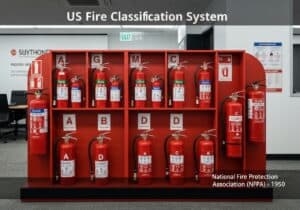To create a manufacturing system that can adapt to changes in production requirements.
- Methodologies: Lean Sigma, Manufacturing
Flexible Manufacturing System (FMS)

Flexible Manufacturing System (FMS)
- Agile Methodology, Computer Aided Manufacturing (CAM), Continuous Improvement, Industrial Automation, Lean Manufacturing, Production Efficiency, Robotics, Supply Chain
Objective:
How it’s used:
- An automated manufacturing system that can be reconfigured to produce different products or change production volumes quickly. It typically includes computer-controlled machines, robots, and material handling systems.
Pros
- Increases flexibility and efficiency; Reduces lead times and inventory levels.
Cons
- High initial investment; Requires skilled workers to operate and maintain.
Categories:
- Lean Sigma, Manufacturing
Best for:
- Producing a variety of products in small to medium batches with high efficiency.
Flexible Manufacturing Systems (FMS) are particularly advantageous in industries such as automotive, aerospace, electronics, and consumer goods manufacturing, where the ability to switch between product types is essential due to changing market demands. In such settings, FMS can be implemented during the production phase where both customization and efficiency are required, allowing manufacturers to respond swiftly to fluctuations in consumer preferences without significant downtime or capital investment. The integration of advanced computer-controlled machines, robotic arms, and automated material handling systems not only enhances the overall production flow but also enables the efficient management of smaller batch sizes, reducing waste and minimizing inventory. Key stakeholders involved in FMS implementation include industrial engineers, production managers, and supply chain analysts, who collaborate to determine optimal configurations and production schedules. For instance, in the automotive sector, manufacturers can easily switch from producing traditional sedans to electric vehicles in response to environmental regulations or consumer trends, demonstrating how FMS can support both sustainability initiatives and competitive advantage. The regular assessment and reconfiguration of production cells allow companies to maintain high standards of quality while rapidly shifting focus between products, which is particularly useful for firms that operate in fast-paced markets or those introducing new products regularly.
Key steps of this methodology
- Implement modular machine components for quick reconfiguration.
- Integrate computer control systems for real-time monitoring and adjustments.
- Utilize automated material handling systems for efficient workflow.
- Develop production scheduling algorithms for dynamic resource allocation.
- Incorporate robotics for flexible operations and tasks.
- Establish quality control systems for continuous feedback and improvement.
- Implement data analytics for performance optimization and maintenance predictions.
- Train personnel on advanced technology and system adaptability.
Pro Tips
- Implement real-time data analytics to optimize production scheduling and resource allocation, enhancing responsiveness to market changes.
- Integrate advanced predictive maintenance systems to minimize downtime and improve equipment reliability within FMS setups.
- Utilize modular design principles for equipment and tooling to facilitate rapid reconfiguration and minimize changeover times.
To read and compare several methodologies, we recommend the
> Extensive Methodologies Repository <
together with the 400+ other methodologies.
Your comments on this methodology or additional info are welcome on the comment section below ↓ , so as any engineering-related ideas or links.
Historical Context
1950
1950
1956
1960
1960
1960
1960
1950
1950
1955
1958
1960
1960
1960
1960
(if date is unknown or not relevant, e.g. "fluid mechanics", a rounded estimation of its notable emergence is provided)















Related Posts
Musculoskeletal Discomfort Questionnaires
Multivariate Testing (MVT)
Multiple Regression Analysis
Motion Capture Systems
MoSCoW Method
Mood’s Median Test